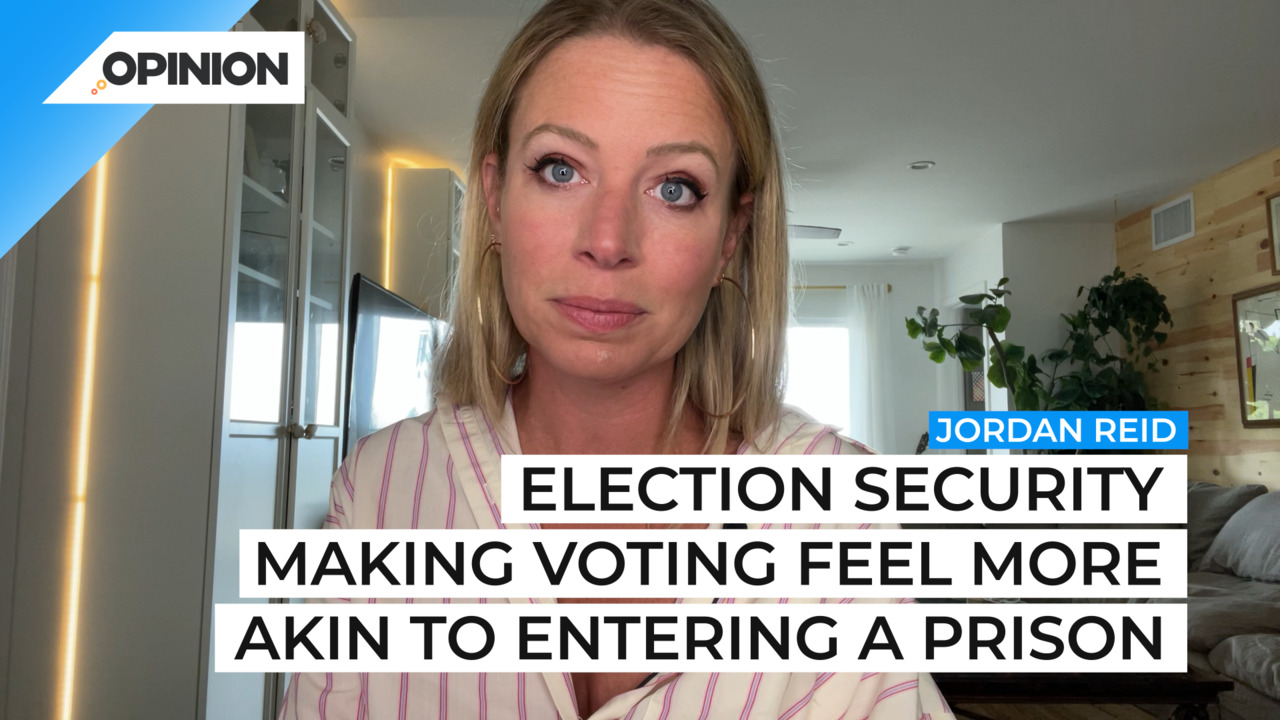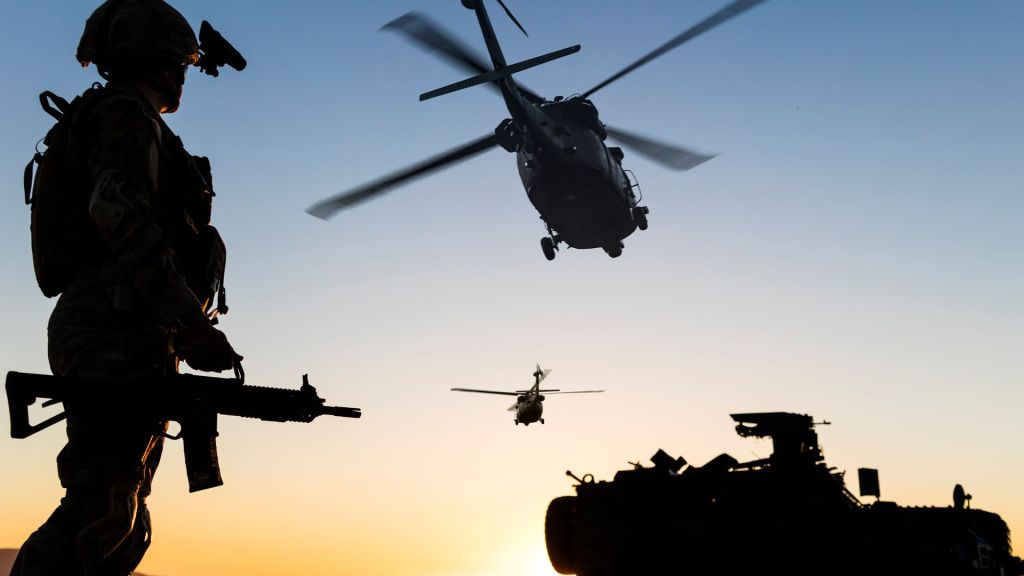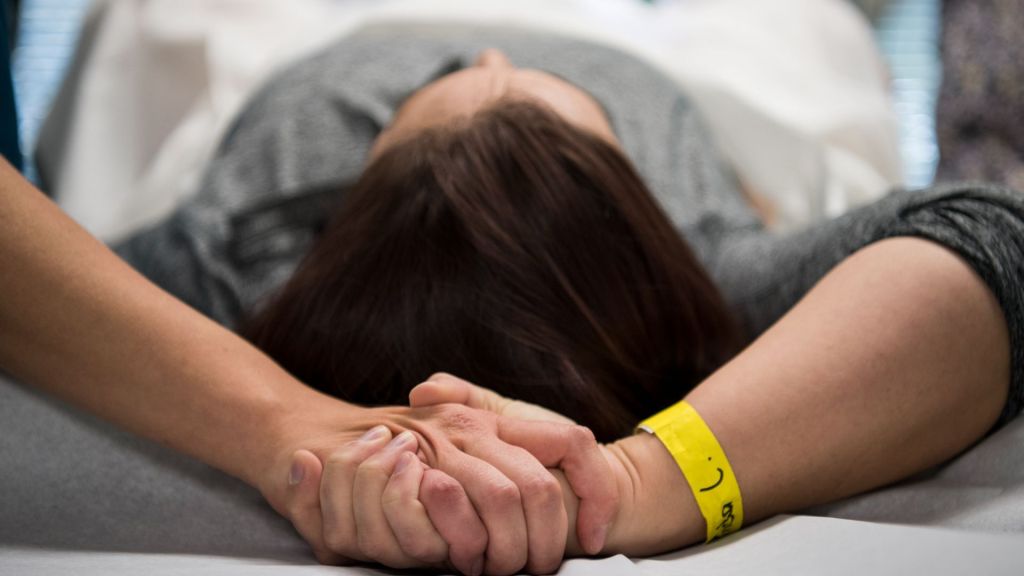
Commentary
-
Our commentary partners will help you reach your own conclusions on complex topics.
I remember the first time I went to vote: It was at a public school on West 46th street, in New York City. I waited outside in the cold with a long line of people who were variously grumpy and excited, and the whole experience was largely…fine. I waited. I was cold. I went in. I voted. I went back home feeling good about having done my civic duty.
Things are a little different nowadays. But before I start in on how and why – because some of this information may be upsetting – I want to underscore that none of the information I’m about to share with you should preclude you from voting. In fact, it should do the opposite.
Now. In the leadup to the November midterms, election officials – spurred by a virtual deluge of threats – are upgrading security protocols to a level that might make voting feel more akin to entering a medium-security prison than, say, a public school. Voters and officials may encounter anything from enhanced security presence to bulletproof glass and panic buttons.
In Tallahassee, Florida, ballot-counters will work out of a building that has been fitted with Kevlar-reinforced walls. In Colorado, the Vote Without Fear act prohibits carrying firearms at polling places or within 100 feet of a ballot drop box.
And offices around the country are implementing active shooter training and coordinating with law enforcement on response protocols – as well as installing tracking devices to monitor ballot movement on Election Day.
In a country that has experienced few instances of election-related violence since the 1960s, this is shocking stuff…except not. We’ve all grown accustomed to the reality of potential violence in situations where it used to seem hypothetical. It’s frightening. And the real-world consequences of that fear are significant.
One in five US election officials say that they are unlikely to stay in their job through 2024, citing stress and fear of retaliation from politicians and the public. Officials are increasing pay and bolstering security to try to offset this development, but there’s another problem here…and that’s that in-person voting is now a thing that some people find scary. Which is, itself, terrifying.
So. If fears of Election Day violence are threatening to upend your plans, here’s what to do. First, vote early, and vote by mail. This also serves to reduce traffic at polling places, making the experience better for everyone.
But if you do choose to vote in person – and that is your right – remember that polling stations are not optimal places for political discourse. Skip the campaign attire, skip debating with the people around you. Keep an eye out for voting disinformation and make sure to get, say, your polling location from a reputable source like eac.gov.
Go in, exercise your right as a citizen, and go home. If you see an instance of voter suppression, report it to your local FBI office or through tips.fbi.gov – do not try to intervene on the spot.
But again, if you take one thing from this segment, it’s not that you should be afraid of voting. If anything, it’s that the current environment only underscores the vital importance of making your voice heard. The midterms are on their way. Make a plan, stay safe, and make yourself heard.
-
RFK Jr.’s war on psychiatric meds risks decades of progress
On Feb. 18, during his first meeting with staff, Health and Human Services Secretary Robert F. Kennedy Jr. stated that he intends to address the possible overmedication of children and the risks of antidepressants — echoing a Trump executive order aimed at reducing childhood chronic disease rates. The order has sparked concerns over youth access… -
Loss of USAID makes America and the world less safe
Elon Musk and President Trump shocked the U.S. foreign policy community and America’s partners around the world with the early and abrupt closure of USAID, the United States Agency for International Development. USAID was a cornerstone of U.S. foreign policy and consistently received bipartisan support from Congress. Experts warned that the decision puts millions of… -
Trump’s ‘Gulf of America’ renaming is mere political spectacle
Aboard Air Force One, en route to the Super Bowl in New Orleans, President Trump held a news conference. As the flight entered international waters over the Gulf of Mexico, he issued an executive order renaming it the “Gulf of America” and declaring Feb. 9 as “Gulf of America Day.” The order, titled Restoring Names… -
President Trump politicizes DC plane crash as Americans mourn
Sixty-seven people died when a Black Hawk helicopter crashed into American Airlines Flight 5342 as it came in for a landing at Reagan National Airport on the night of Jan. 29 outside of Washington, D.C. Investigators are still examining the accident and putting details together, but believe that the helicopter was flying at too high… -
Project 2025 is Trumpism on steroids
President Trump has already taken several actions that align with Project 2025, a far-right blueprint for Trump’s second term developed by the Heritage Foundation. Among other intiatives, his administration has moved to eliminate DEI programs, reinstate service members dismissed for refusing the COVID-19 vaccine, and revive “Schedule F,” a policy making it easier to fire…
Latest Opinions
-
 Getty Images
Getty Images
NCAA Tournament: Which men’s teams are on ‘bubble watch’?
-
 Getty Images
Getty Images
NFL scouting combine: How much faster can these players run?
-
 Getty Images
Getty Images
James Cameron seeks New Zealand citizenship following ‘horrific’ Trump re-election
-
 Getty Images
Getty Images
San Francisco DA Charges 11 in SNAP fraud scheme involving $4M
-
 Getty Images
Getty Images
California’s minimum wage increase led to job losses, higher prices: Study
Popular Opinions
-
In addition to the facts, we believe it’s vital to hear perspectives from all sides of the political spectrum.






